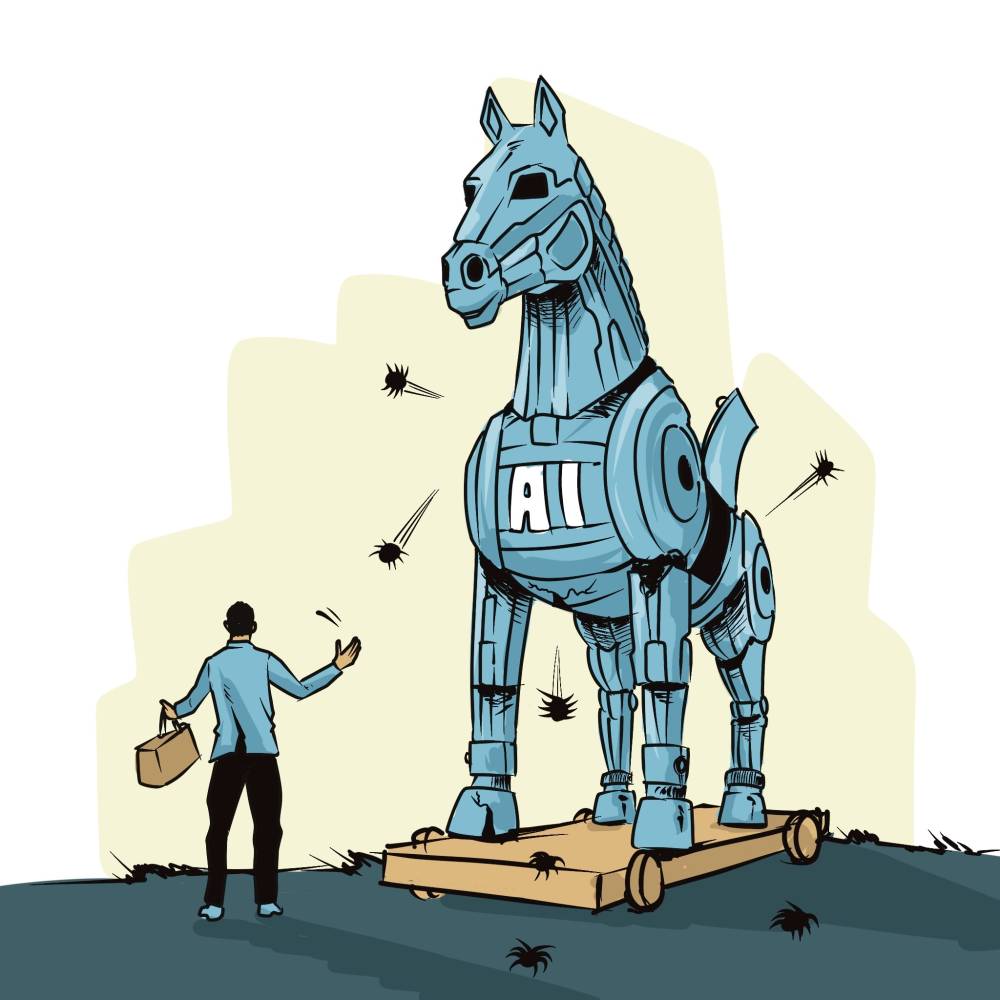Warning: The AI traps even smart CEOs fall into

Artificial intelligence (AI) is the loudest drumbeat in business today. Board decks brim with pilots, vendors promise miracles and investors ask, “What’s your AI strategy?” Yet in my work with owner-operators and Fortune-level leaders, I’ve seen a hard truth: the biggest AI losses aren’t technical—they’re leadership errors. AI can multiply value or multiply waste. It depends on the decisions at the top.
Below are five traps I see even sharp top executives, CEOs or owners fall into—and how to sidestep them so AI becomes a genuine performance engine. Not an expensive distraction. And remember: Always tie AI to your overall strategy and vision. If it doesn’t advance your customer, cost or capability advantage, it’s a hobby.
1. The illusion of instant wins: Why AI isn’t a magic wand
AI is not a vending machine where you insert a budget and out pops transformation. Most initiatives underperform because leaders expect overnight ROI and skip the messy middle: problem definition, data readiness, workflow redesign and change management.
What to do instead: Treat AI like any other capital project. Define one painful, high-frequency use case with clear metrics (time saved, error rate reduced, revenue uplift).
Pilot fast. Lock the win. Scale only after you’ve proven repeatable value. Put a date, dollar and owner on every claim. If it can’t be measured in the P&L or customer experience within a quarter or two, it’s probably theater.
2. Data without direction: How misguided input leads to costly output
Garbage in, gospel out—the AI age’s most dangerous bias. Models sound confident even when they’re confidently wrong. The root cause isn’t always the model; it’s unclear strategy, mislabeled data or data that reflects yesterday’s business.
What to do instead: Start with the decision, not the dataset. Ask, “Which decision do we want AI to improve? What outcome defines ‘better’?”
Then work backward to the minimum viable data needed. Build a living data catalog, tighten governance and continuously retrain with feedback from the front line. If your data is fragmented across silos, fix that before you scale. Direction first, data second, model third.
3. Over-automation: When AI replaces insight instead of enhancing it
One of my clients was using ChatGPT to diagnose every medical condition within the family.
Another one of my clients was leading a board meeting and constantly ChatGPT’ing answers to the conglomerate’s most important questions. That doesn’t work. AI is a tool, not a CEO.
The true power comes when it is combined with human knowledge, experience, expertise, intuition, the ability to “read a room” and understand people, the skill to tell what someone is thinking by reading their eyes and behavior, gut feeling, and all those intricate human elements that combined make for exceptional business leaders.

Every truly great business leader I have ever worked with—from Fortune 500 CEOs to self-made billionaires—understood this and has been consistently working on mastering these skills and abilities. This cannot come from AI.
The fastest way to de-skill an organization is to let AI become the brain instead of the copilot. Over-automation creates brittle systems that fail in edge cases, erode judgment and distance leaders from reality.
What to do instead: Design for centaur teams—humans plus machines—where AI handles the repeatable and humans own exceptions, final calls and learning loops. Build “human-in-the-loop” checkpoints for material decisions (pricing moves, credit approvals, safety-relevant outputs). Institutionalize postmortems when the model and the human disagree.
4. Ignoring the human factor: Why AI needs your team’s wisdom
Most stalled AI programs are not technical failures—they’re cultural ones. People don’t resist AI; they resist being made irrelevant. If adoption threatens status or identity, expect passive slowdown and quiet sabotage.
What to do instead: Over-communicate the “why” and the “win.” Show each role how AI removes drudgery and lifts impact. Train for new skills (prompting, exception handling, data QA, model oversight) and reward early adopters publicly.
Create “AI champions” in each function who own use-case pipelines and share wins weekly. If people can see their future in the system, they’ll help build it. If they can’t, they’ll block it.
5. Security slipups: The hidden risks of AI implementation
Rushing to experiment can open doors you never meant to unlock: sensitive data pasted into public tools, IP leakage through third-party plugins, shadow AI vendors without contracts, and models that memorize confidential information.
What to do instead: Set guardrails before scale. Classify data (public, internal, restricted) and restrict model access accordingly. Use enterprise-grade tools with audit trails and bring-your-own-key encryption.
Keep a model registry, vendor inventory and a red-team routine to probe prompts, jailbreaks and leakage. Treat model outputs like code—reviewed, tested and monitored in production. Security is not a department; it’s a habit.
A practical operating system for CEOs
Use this simple cadence to keep AI value-creating and risk-controlled:
• Quarterly: Approve three to five use cases with explicit ROI targets and owners. Kill or scale based on evidence.
• Monthly: Review a one-page AI scorecard (throughput saved, error rates, customer NPS, dollars realized).
• Weekly: Celebrate one frontline win; harvest prompts, workflows and lessons into a shared playbook.
• Always: AI must be connected to strategy and the overall vision for the company. It must impact the bottom line.
Red flags that you’re doing AI theater
- No one can name the top three AI use cases and their owners.
- The data team is drowning in requests, but no P&L metric has moved.
- Pilots multiply; value doesn’t.
- The most common word in your AI meetings is “cool.”
Five to thrive
AI won’t fix a fuzzy strategy or a broken culture. But in the hands of a disciplined leader, it will compress cycle times, reduce errors and unlock growth you can actually bank. The winners won’t be the companies that shout the loudest about AI—they’ll be the ones that make fewer, smarter bets and compound the gains. That’s the quiet edge. That’s how you turn hype into an operating advantage. In a noisy market, disciplined AI isn’t flashy—it’s compounding execution.
Lead that way, and the numbers will tell the story.
1. Start narrow. One painful, measurable use case before you scale.
2. Decisions first. Define the decision and outcome; then find the data.
3. Design the centaur. Keep humans in the loop for judgment and accountability.
4. Build believers. Train, communicate and reward adoption relentlessly.
5. Secure the stack. Guardrails, audits, vendor discipline and red-teaming.
Tom Oliver, a “global management guru” (Bloomberg), is the chair of The Tom Oliver Group, the trusted advisor and counselor to many of the world’s most influential family businesses, medium-sized enterprises, market leaders and global conglomerates. For more information and inquiries: TomOliverGroup.com or email Tom.Oliver@inquirer.com.ph.
Tom Oliver, a “global management guru” (Bloomberg), is the chair of The Tom Oliver Group, the trusted advisor and counselor to many of the world’s most influential family businesses, medium-sized enterprises, market leaders and global conglomerates. For more information and inquiries: www.TomOliverGroup.com or email Tom.Oliver@inquirer.com.ph.





















